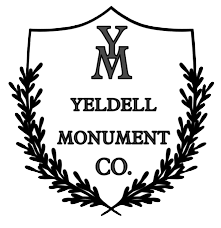Pricing
Generally speaking, monuments are priced by material, stone size, and the amount of polishing that must be done. For example an upright monument polished on the front and back, with sides and top left rough, would cost less than a monument the same size and material polished on the front, back, top and sides. The least expensive granite used for monuments in the southeastern part of the United States is Georgia Gray granite. Expect a markup of anywhere from 50-150% for the same size stone in another color.
Granite vs. Marble
Granite memorials are by far the most durable monuments. Whereas marble–a very soft material–deteriorates over time (you’ve seen older monuments that you can no longer read because of erosion), granite stays intact and weathers so little that we’re not even sure how long it would take for a stone to become illegible (centuries, we suspect). Beyond that, most granites cost less than marble.
Bronze Memorials
Many municipal and other perpetual care cemeteries require a bronze memorial. While bronze memorials are quite attractive when first installed, they will, over time, develop “patina,” a green color and loss of shine. We highly recommend granite over bronze because of its virtually unchanging appearance. The Veterans Administration provides a free marker for all veterans who are honorably discharged. You have the option of choosing a granite marker instead of the more commonly used bronze. If you prefer a granite marker, be sure that the funeral home (or whoever orders the VA marker) knows that you want a granite marker. By choosing a granite marker, you also avoid the cost of purchasing a granite base for a bronze plaque. Be advised that the only bronze markers we offer are those that match the Veterans style marker.
Cemetery Requirements
Before purchasing a memorial, check with your cemetery’s caretaker to see if there are any specific regulations for installing the stone. The most common is a cement border (catwalk) around the base of the stone. Sometimes cemeteries have specific foundation requirements, such as depth, material, and so forth.
Note: Our company guarantees any foundation that we do OUR WAY for as long as we are in business. We refuse to violate cemetery rules, but we hold the cemetery responsible for foundations done by their specifications.
Grave Position
Before ordering a monument for two or more people be sure to check the position of each grave. One of the most common mistakes made by customers involves the names on such a stone being carved in the wrong place (left vs. right). The customer is responsible for accurately providing this information to the monument company. Tradition dictates that husband and wife be buried in the same position in which they are married, with the wife typically laid at the left side of husband. Therefore, as the bodies would lie, the husband is on the left and the wife on the right as we stand at the foot of the grave. Nevertheless, some burials are reversed and, in a select few cemeteries, monuments read away from the graves. We have no way to know the burial positions and as such we depend on the customer to know into which side each name should be carved.
